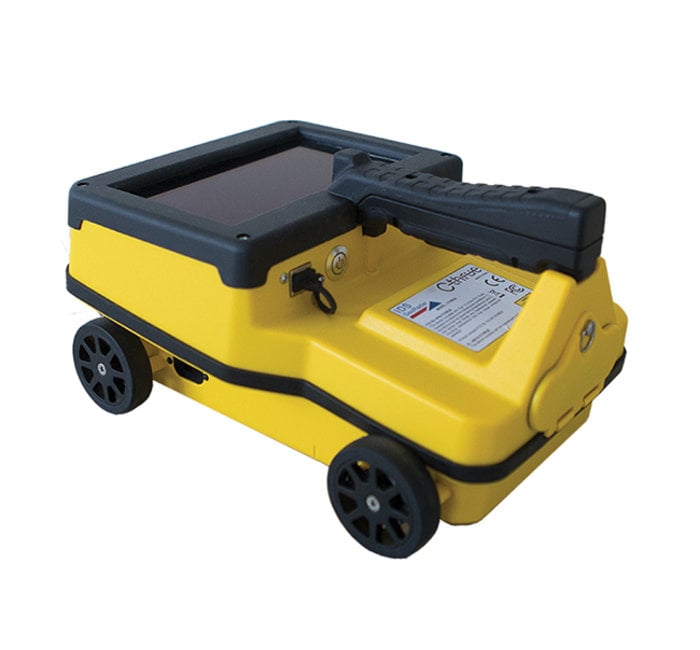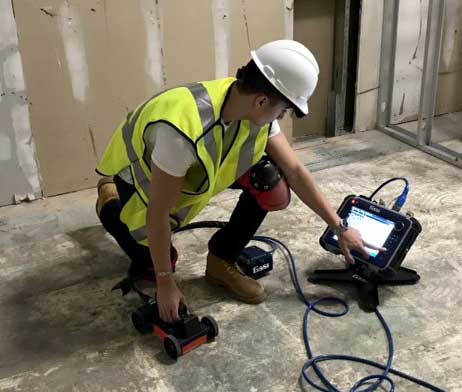RainierGPR Service Areas: Comprehensive Coverage for Concrete Scanning
RainierGPR Service Areas: Comprehensive Coverage for Concrete Scanning
Blog Article
Concrete Scanning: A Crucial Action Towards Ensuring Structural Integrity and Safety And Security
In the world of construction and framework maintenance, the significance of concrete scanning can not be overemphasized. By employing innovative innovation and approaches, concrete scanning offers as a critical device in making sure that the integrity and safety and security of bridges and structures are supported to the highest possible standards.
Relevance of Concrete Scanning
Concrete scanning plays a vital role in making certain the structural honesty and security of structures and infrastructure jobs. By making use of advanced modern technologies such as ground-penetrating radar (GPR) and electromagnetic induction, experts can non-destructively evaluate concrete structures to find potential problems, gaps, embedded objects, and support format. This process enables very early detection of abnormalities that could jeopardize the security of a framework, avoiding expensive problems and ensuring the safety of occupants.
Concrete scanning is especially necessary throughout the preparation and construction phases of a job. Before exploration, reducing, or coring into concrete, scanning assists identify the exact locations of rebar, post-tension cable televisions, and various other ingrained elements, lowering the danger of unintentional hits that could cause structural weak points. Additionally, concrete scanning aids in top quality control by verifying the thickness of concrete covers and detecting any discrepancies that may affect the overall toughness of the structure. Ultimately, investing in concrete scanning services is not just an aggressive procedure to alleviate dangers however additionally a basic action towards maintaining the long-term safety and security and security of structures and facilities.
Modern Technology for Concrete Assessment

Advantages of Early Discovery
Prompt discovery of architectural concerns can substantially minimize threats and ensure the longevity of building and construction projects. By determining possible problems at an early stage in the building and construction procedure, stakeholders can take aggressive measures to address issues before they rise right into larger and much more expensive troubles. One of the key benefits of very early discovery is the avoidance of architectural failings, which can posture significant security hazards and lead to task hold-ups and economic losses.
In addition, very early discovery permits for prompt fixings and maintenance, which can assist extend the lifespan of the structure. By addressing issues quickly, construction groups can stay clear of expensive repair services or even the demand for early replacement of architectural parts. This positive method not only saves money and time yet likewise enhances the total safety and security and longevity of the building and construction job.
Additionally, very early detection can enhance project preparation and decision-making by supplying stakeholders with important insights right into the problem of the framework. Equipped with this information, task supervisors can make informed options concerning construction timelines, products, and methods, bring about much more reliable and successful task end results.
Guaranteeing Architectural Security
Guaranteeing the architectural stability of a building and construction project is vital to its safety and durability. Architectural stability describes the capacity of a building or framework to maintain its type and function under environmental conditions and numerous lots. To achieve this, detailed analysis and tracking of the structure are vital. Concrete scanning plays a vital function in making sure structural stability by identifying prospective concerns such as voids, delamination, or reinforcement rust that could endanger the honesty of the framework over time.
By utilizing advanced scanning technologies like ground-penetrating radar (GPR) and electro-magnetic induction, construction specialists can non-invasively check concrete frameworks to identify locations of concern under the surface area. This aggressive strategy allows for the very early detection of defects or weaknesses, allowing prompt repairs or support to stop architectural failures.
Regular concrete scanning throughout various building phases and throughout the life process of a framework can assist maintain its stability, minimize dangers, and make sure the security of residents. By prioritizing structural stability through concrete scanning, building and construction projects can boost their durability and toughness, eventually adding to better safety and longevity.

Preventing Critical Failures
To protect versus disastrous events, thorough tracking and aggressive maintenance are crucial in averting essential failures within architectural frameworks. Identifying prospective concerns before they rise is essential to protecting against structural failings. Implementing regular inspections, such as concrete scanning, can reveal covert defects like voids, fractures, or deterioration that might endanger the integrity of a structure. By making use of advanced scanning innovations like Ground Passing through Radar (GPR) or Concrete X-ray, engineers can non-destructively assess the condition of concrete and recognize weak points that need support or fixing - RainierGPR Service Areas.

Verdict
To conclude, concrete scanning plays an important duty in making certain structural honesty and safety by utilizing sophisticated innovation for early detection of possible concerns. This proactive method assists avoid vital failures and guarantees the stability of structures. It is important to prioritize concrete evaluation as a conventional method to secure the durability and security of structures and framework.
Concrete scanning plays a crucial role in ensuring the architectural honesty and security of structures and framework tasks. In addition, concrete scanning aids in quality control by verifying the density of concrete covers and finding any type of discrepancies that might impact the overall sturdiness of the framework. Concrete scanning plays a vital role in ensuring architectural security by spotting possible problems such as voids, delamination, or support corrosion that might endanger the honesty of the structure over time.

In blog final thought, concrete scanning plays an essential duty in ensuring architectural honesty and safety and security by utilizing advanced modern technology for very early discovery of possible concerns.
Report this page